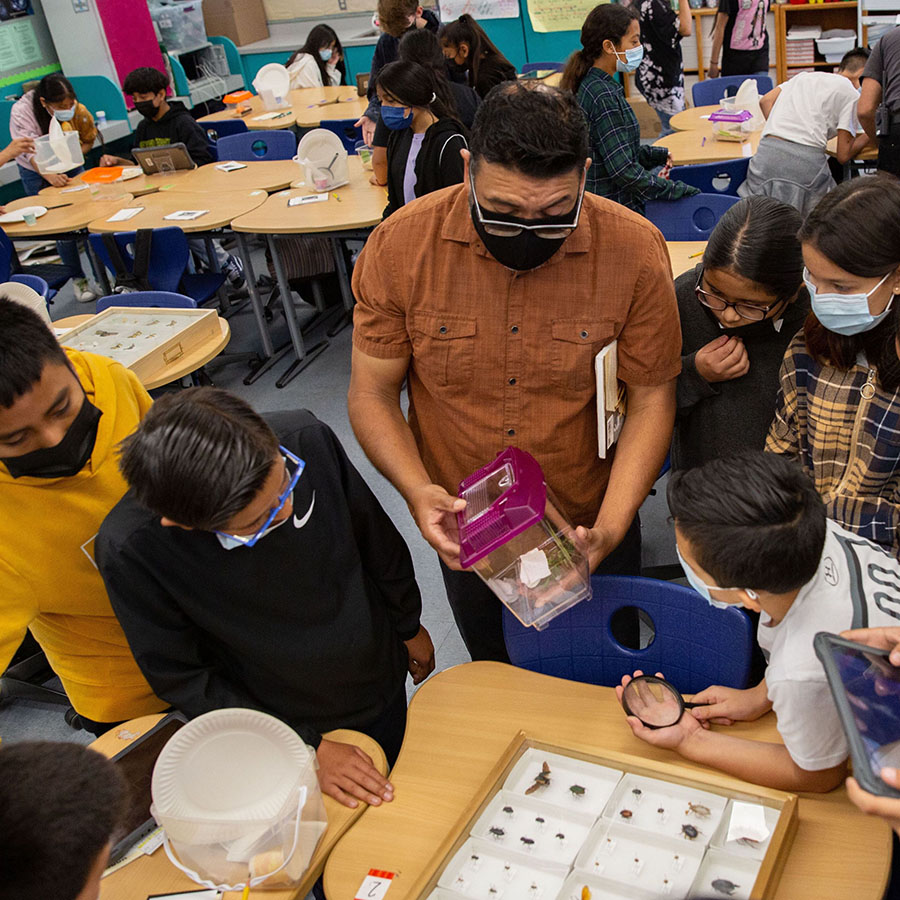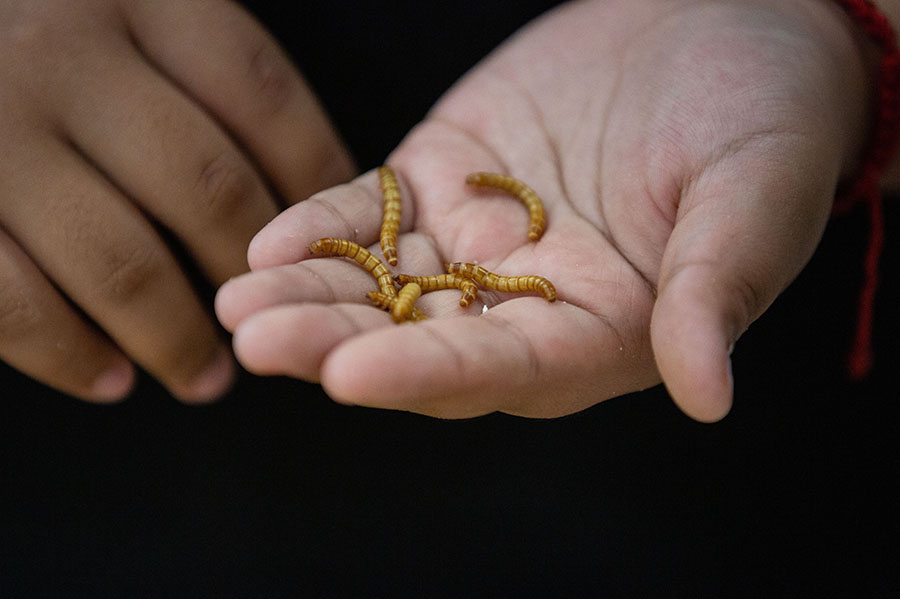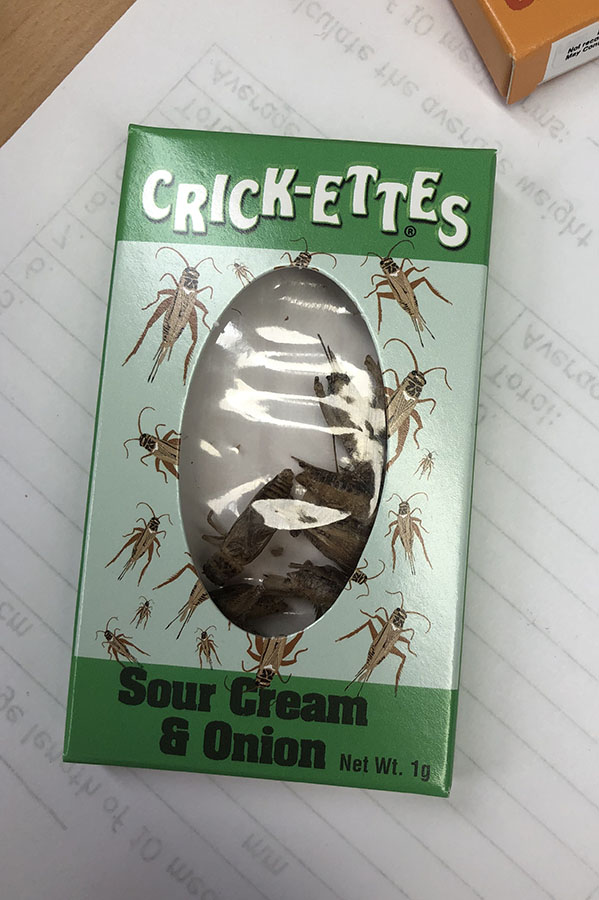by Kim Lamb Gregory
 Several sixth graders clustered around CSU Channel Islands Professor of Biology Ruben Alarcon, Ph.D., as he held a display of bugs under glass and spoke about a protein-packed and plentiful food supply that could help feed the world: insects.
Several sixth graders clustered around CSU Channel Islands Professor of Biology Ruben Alarcon, Ph.D., as he held a display of bugs under glass and spoke about a protein-packed and plentiful food supply that could help feed the world: insects.
“You can have salad and bee larvae,” Alarcon said.
“No thanks,” said one boy.
When asked if he might be willing to snack on an insect, Anthony Granados, 11, was more circumspect.
“It’s kind of weird, but I like trying new things,” Anthony said, when asked about what flavor bug he might like to try. “I don’t know,” he said, “maybe ranch.”
Alarcon is working with 13 teachers and 26 classes from seven different elementary and middle schools in the Oxnard School District who are participating in an Edible Insect Project.
“Throughout the Edible Insect unit, students raise mealworms and learn about edible insects as a sustainable way to help mitigate the impacts of climate change,” explained Oxnard School District Science Instructional specialist Sarah Raskin, who worked with Alarcon to lead the project.
 “They are raising meal worms and doing experiments to see how the meal worms’ growth is affected by what they feed them,” Alarcon explained. “They read about how our diet influences the amount of greenhouse gasses produced. We also will tie the lessons to cultures that eat insects.”
“They are raising meal worms and doing experiments to see how the meal worms’ growth is affected by what they feed them,” Alarcon explained. “They read about how our diet influences the amount of greenhouse gasses produced. We also will tie the lessons to cultures that eat insects.”
According to the Harvard Political Review, producing one pound of beef requires 10 pounds of feed, 1,000 gallons of water, and 200 feet of pasture. Producing one pound of insect protein requires two pounds of feed, one gallon of water and two cubic feet of land space.
The students at one of the schools, Robert J. Frank Academy of Marine Science and Engineering in Oxnard, spent a morning with Alarcon as he visited classrooms where students were experimenting with the best way to raise hearty mealworms by feeding them different things such as carrots, jicama, oat bran and a number of other foods to see how well they fared.
“What we did was switch a carrot out with an apple and other people changed their food to oat bran or wheat to see if it increases their growth more,” said Mhykee Rufin, 12.
When asked about bugs on the dinner table, Mhykee said: “To eat a bug might be like, disgusting at first, but it might be a cool experience to try for once.”
The students will not eat the mealworms they raise, but other anonymous mealworms as some students find it hard to resist getting attached to their wriggly experiments.
“Where’s Pablo?” asked R.J. Frank Academy of Marine Science and Engineering
sixth grader Karla Garcia as she poked through a paper plate of oat bran teeming with meal worms. “We can’t find Pablo. He is the longest beetle.”
 Alarcon is adding a cultural dimension to the Edible Insect Project as roughly two billion people worldwide already supplement their diets with insects, according to a recent United Nations report.
Alarcon is adding a cultural dimension to the Edible Insect Project as roughly two billion people worldwide already supplement their diets with insects, according to a recent United Nations report.
“They’re really good,” Alarcon said, pointing to a display of packaged, flavored insects. “In parts of Mexico they eat them. They taste like chiles.”
Some of the students who had grown up around Oaxaca said they were accustomed to eating grasshopper tacos, or chapulines tacos.
Alarcon and Raskin plan to launch another Edible Insect Project in spring of 2023 and perhaps expand it to more school districts.
A recent International Panel on Climate Change (IPCC) indicated that climate change is at a critical time in terms of taking action for a sustainable future, so Raskin believes it’s important to introduce the next generation to at least one hopeful solution.
“And it empowers them by having them take part in developing these solutions,” Raskin said.
